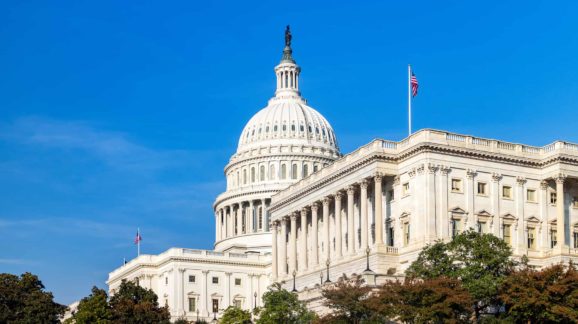A Look at “Modernizing Regulatory Review”

Photo Credit: Getty
The Biden “Modernizing Regulatory Review” plan is about gutting the restraint of the past four years, and if you read statements from the proponents of hyper-regulation, they aren’t coy about that.
The new memorandum poses as a reinforcement of longstanding E.O. 12866 (from 1993) on reviewing the costs and benefits of significant regulations. But that order itself had changed a Reagan administration directive that benefits “exceed” costs to the one prevailing now that benefits “justify” costs. And the modern left and progressives do not want to keep even watered-down 12866 either.
This new Review variant to emerge from “modernization” can be expected to effectively do away with cost-benefit analysis altogether—and very little of that exists now as it is. Only a fraction of rules, and none of the bulk of what government does, which is beyond the Office of Management and Budget’s (OMB) ambit. The new process is likely to do away with cost/benefit analysis by elevating unquantifiable aims as benefits (“Our Nation today faces serious challenges, including a massive global pandemic; a major economic downturn; systemic racial inequality; and the undeniable reality and accelerating threat of climate change”) and deny costs of regulation altogether. A more bipartisan view of modernization recently came from a major Department of Justice memorandum, but even that is highly deferential to administrative state governance.
The memo states, “the goal of producing a set of recommendations for improving and modernizing regulatory review. These recommendations should provide concrete suggestions on how the regulatory review process can promote public health and safety, economic growth, social welfare, racial justice, environmental stewardship, human dignity, equity, and the interests of future generations.” It also would revise OMB’s Circular A-4, to “fully account … for regulatory benefits that are difficult or impossible to quantify, and does not have harmful anti-regulatory or deregulatory effects,”
There is no mention of costs and burdens of regulation. Circular A-4 already left out many categories of costs and was not a powerful restraint, and the new scheme will eclipse even that. We can be sure of that, since Biden also ditched Executive Order 13777 of February 24, 2017 (Enforcing the Regulatory Reform Agenda), which established regulatory reform officers and task forces at agencies. The input of these individuals would actually have been vitally important in the new “modernizing regulatory review,” if it were not to be a one-sided re-scripting.
So, the aim is to put weight on the scales of whether or not to regulate such that the answer will always be in the affirmative, replacing market operation and civil society with government in the pursuit of a range of non-quantifiable goals, even without legislation from Congress. Agencies are being unleashed to issue guidance, memoranda, notices, circulars, bulletins, letters, interpretations and so on; all the stuff I like to call “regulatory dark matter.”
The memo also states that the new regime “serves as a tool to affirmatively promote regulations,” and that the new architects “consider ways that OIRA [the Office of Information and Regulatory Affairs] can play a more proactive role in partnering with agencies to explore, promote, and undertake regulatory initiatives that are likely to yield significant benefits.”
This means that rather than act as a watchdog (albeit never that strong), the OIRA is now to join the thousands of regulators to not only help write and lobby for new regulations, but to even come up with new proposals to regulate. The “Modernizing Regulatory Review,” in a nutshell plainly translates into a new architecture for never-ending regulations as long as the left declares that benefits exceed costs.
The fruits of this can already be seen in the current system, where even under Trump’s one-in, two-out, it was obvious when looking at the longer-term horizon of agencies, plans in the Unified Agenda, that they had on tap far more regulatory than deregulatory measures.